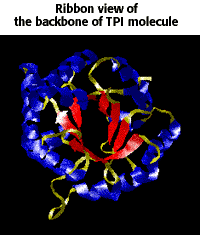Linear Functions Applications
Enzyme Kinetics
Michaelis-Menten enzyme kinetics can be modeled by the following equation, where V represents the reaction velocity, Vmax represents the maximum reaction velocity, Km represents the Michaelis-Menten constant, and [S] represents the substrate concentration.
Looking at the equation, one can readily see that the velocity of the reaction, V , is dependent on the substrate concentration, [S]. In fact, the Michaelis-Menten equation is a rational function. As rational functions can be difficult to work with graphically, the Michaelis-Menten equation can be transformed into a linear equation by taking the reciprocal of both sides as,
This new equation is called the Lineweaver-Burk equation after the researchers who derived it in 1934. The Lineweaver-Burk equation is a linear equation, where 1/V is a linear function of 1/[S] instead of V being a rational function of [S]. The Lineweaver-Burk equation can be readily represented graphically to determine the values of Km and Vmax.
Now use the Lineweaver-Burk equation to answer the following questions: Determine the slope of the line represented by the Lineweaver-Burk equation. Determine the 1/V -intercept of the Lineweaver-Burk equation. Given a Lineweaver-Burk plot, determine the Vmax of a particular enzyme. Given a Lineweaver-Burk plot, determine the Km of a particular enzyme. Determine the 1/[S]-intercept of the Lineweaver-Burk equation. Compare a Lineweaver-Burk plot to a Michaelis-Menten plot for the same data set. ***** |
The Biology Project > Biomath > Linear Functions > Applications > Enzyme Kinetics
The Biology Project
Department
of Biochemistry and Molecular Biophysics
The University of Arizona
May 2006
Contact the Development Team
http://www.biology.arizona.edu All contents copyright © 2006. All rights reserved.

![1/V = (Km + [S])/Vmax[S] = (km/vmax)(1/[S]) + 1/vmax.](graphics/EnzymeKineticsequn.gif)